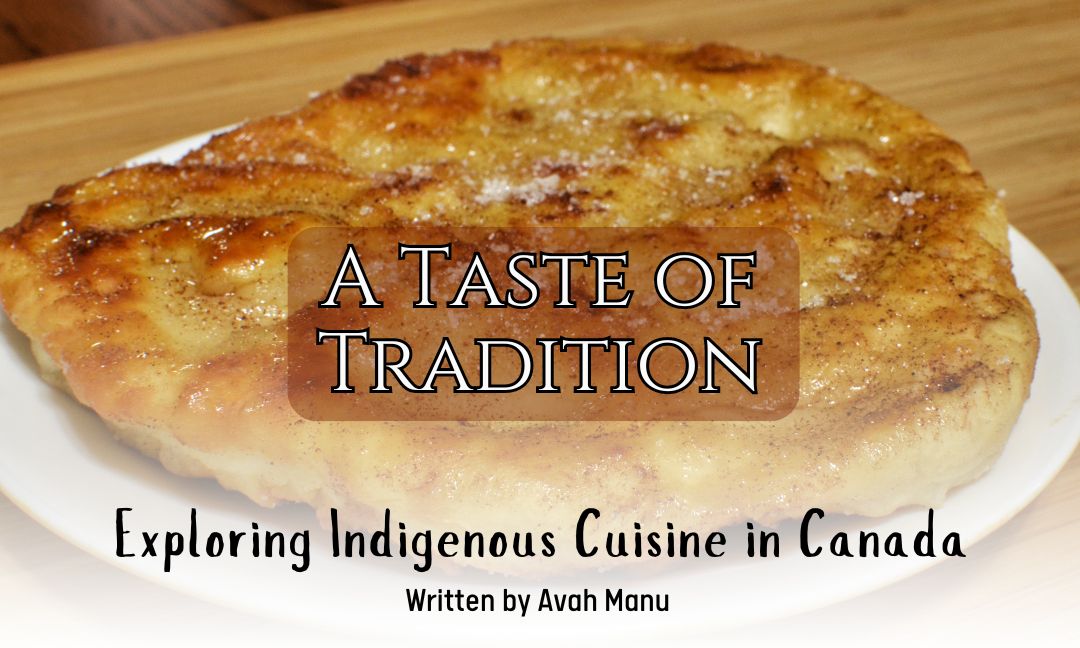Written by: Avah Manu
Edited by: Eleanor Jeavons
Designed by: Eleanor Jeavons
Published by: Maryam Khan
Along with the arrival of Indigenous Peoples in the Americas came a deep respect and regard for nature, thanks to their spiritual beliefs. Their faith and connection to the land reflected how they treated the flora and fauna of the country. Therefore, the Indigenous Peoples’ sustainable use of plants, meat, fish, and vegetables led to the creation of many culturally significant meals native to them.
In honour of Indigenous Peoples, and in respect to their land, let us embark on this journey to learn more about Indigenous heritage. By learning the history and importance of food for native Canadians we’ll learn how that shaped their cultural practices and traditions today.
Bannock:
Bannock (pronounced Ban’ ik) is a flat bread made from whole wheat flour and it is either fried or baked. Bannock became a staple food in many Indigenous communities. The Inuit call it ‘Palauga’,the Mi’kmaq call it ‘luskinikn’, and the Ojibwés call it ‘Ba’Wezhiganag’. It is said that Indigenous Peoples were first introduced to this bread by Scottish fur traders in the 18th and 19th centuries. Scottish barley was usually made of oatmeal, barley or peameal, but Indigenous Peoples later adopted the practice of using corn flour or plants instead.
It is important to note that bannock is a reminder that Indigenous Peoples were forced to assimilate into European culture, and that this particular flatbread was how First Nations survived on reserves, where they were not allowed to hunt.
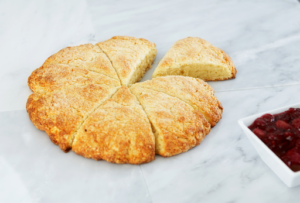
Bannock can be traced back to Europe, but Indigenous Peoples still had their own version of flat bread before the arrival of settlers. They were made from starch or flour of bracken rhizomes. For example, the camas bulb (native perennial herb from the lily family) would have been baked for a long time, dried out, and then chopped and formed into loaves and cakes. Flat bread made from flour was common across Indigenous communities, because it kept without spoiling for long periods of time, and it was a good source of carbohydrates, which is rare in certain Canadian regions.
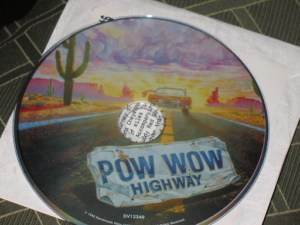 Bannock holds much cultural significance for Indigenous Peoples. Today, we see many restaurants and Indigenous stores that serve Bannock, and even add a modern twist to it. For example,the “Indian tacos” which are served at Tea N Bannock, a restaurant located in Toronto. Songs and movies have also been made about Bannock, like Powwow Highway and Bannock Love by Art Napoleon.
Bannock holds much cultural significance for Indigenous Peoples. Today, we see many restaurants and Indigenous stores that serve Bannock, and even add a modern twist to it. For example,the “Indian tacos” which are served at Tea N Bannock, a restaurant located in Toronto. Songs and movies have also been made about Bannock, like Powwow Highway and Bannock Love by Art Napoleon.
Nillii Gaii:
Nillii Gaii (pronounced ni-LEE guy-EE) is meat originating from the caribou (North American reindeer), that is dried by stove heat or smoke.
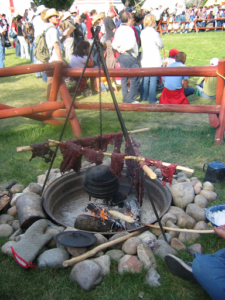 Nillii Gaii is made using a practice that Indigenous communities used to preserve wild game during long winters. First Nations have depended on caribou for generations, for food, clothing, tools and more. The importance of caribou to the Indigenous community can be seen by the many places traditionally named that refer to caribou, such as, Qinianaq, Tuktu, Ekwe and Atihk. Hunting and dressing caribou was also considered a rite of passage.
Nillii Gaii is made using a practice that Indigenous communities used to preserve wild game during long winters. First Nations have depended on caribou for generations, for food, clothing, tools and more. The importance of caribou to the Indigenous community can be seen by the many places traditionally named that refer to caribou, such as, Qinianaq, Tuktu, Ekwe and Atihk. Hunting and dressing caribou was also considered a rite of passage.
Now, Indigenous Peoples who sustained themselves from caribou are finding the current scarcity of them difficult. They were the first to notice the caribou’s dwindling population, and feel they’ve lost a critical part of Indigenous culture for future generations. However, indigenous communities are still fighting for and leading movements for the caribou herds. For example, in Manitoba, the Nisichawayasihk Cree Nation encouraged the government and Manitoba Hydro to move forward on caribou conservation.
Chef and food educator Stephanie Baryluk created the Rooted Indigenous Foods Program. The menu was based around cuisine that was passed down to her from her elders in her Gwich’in community. She takes traditional foods and incorporates modern twists to create new meals that she can serve, while still paying homage to her heritage. The menu includes Bison Dhandaii Nillii Pasta, which is made with dried bison meat.
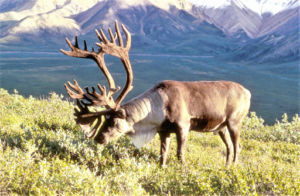
The importance of caribou meat to First Nations is shown through traditions and practices performed by Indigenous Peoples. As time passes, Indigenous Peoples are found to be easily adapting to new conditions to support caribou populations and strengthen their cultural ties with the animal.
Conclusion:
This article introduces us to Indigenous cuisines that have been shaped by their environment. As a result, this has led to the creation of dishes that hold importance to current native Canadian communities, and will connect future Indigenous generations to their heritage as well. Bannock and Nillii Gaii illustrate the history of Indigenous Peoples in Canada and how they contribute to the rich diversity of our country.
Sources:
Bannock:
https://www.thecanadianencyclopedia.ca/en/article/bannock
https://youtu.be/bI6BU_8T6PA?si=SQP5mARda6ae8xJn
Nillii Gaii:
https://www.cbc.ca/news/canada/british-columbia/traditional-indigenous-food-1.7241114
https://www.cbc.ca/player/play/video/9.6427480
https://www.natureunited.ca/what-we-do/our-priorities/innovating-for-climate-change/conserving-ca

